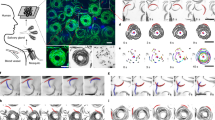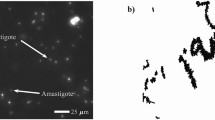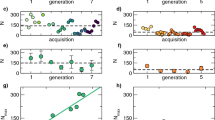Abstract
AT several points in their complex life-cycle malaria parasites are bound to leave their intracellular or ‘intramural’ existence to assume a temporary vagrant and free life. The movements of these developmental stages of the plasmodia may be studied in vitro in a few instances such as the exflagellation of the microgametocyte and the movements of the male gamete, or the motions of the cryptozoites of avian malaria and their engulfment by phagocytic cells as recorded by the slow-motion ciné-camera1. Other active movements, like the penetration of the merozoites into erythrocytes, have only rarely been glimpsed at by a lucky or persevering observer2. The actual mode of locomotion of the ookinetes (known also as the travelling vermicule) and the active movements of sporozoites of mammalian plasmodia have never been recorded since Schaudin's publication in 1902 (ref. 3) and the numerous unsuccessful attempts to repeat his observations4.
This is a preview of subscription content, access via your institution
Access options
Subscribe to this journal
Receive 51 print issues and online access
$199.00 per year
only $3.90 per issue
Buy this article
- Purchase on Springer Link
- Instant access to full article PDF
Prices may be subject to local taxes which are calculated during checkout
Similar content being viewed by others
References
Huff, C. G., Pipkin, A. C., Weathersby, A. B., and Jenson, D. V., J. Biophys. Biochem. Cyt., 7, 93 (1960).
Trager, W., Trans. Roy. Soc. Trop. Med. and Hyg., 50, 419 (1956).
Schaudin, F., Arb. K. Gesundh., 19, 169 (1902).
Huff, C. G., and Coulston, F., J. Infect. Dis., 75, 231 (1944).
Garnham, P. C. C., Bird, R. G., and Baker, J. R., Trans. Roy. Soc. Trop. Med. and Hyg., 54, 274 (1960).
Garnham, P. C. C., Bird, R. G., Baker, J. R., and Bray, R. S., Trans. Roy. Soc. Trop. Med. Hyg., 55, 9 (1961).
Garnham, P. C. C., Bird, R. G., Baker, J. R., and Bray, R. S., ibid., 55, 98 (1961).
Garnham, P. C. C., Bird, R. G., Baker, J. R., and Bray, R. S., ibid., 56, 116 (1962).
Vincke, I. H., and Lips, M., Ann. Soc. Belge Méd. Trop., 28, 97 (1948).
Vincke, I. H., C.R. travaux Congress Scientifique, 1, Elisabethville (1950).
Yoeli, M., and Wall, W. J., Nature, 168, 1078 (1951).
Yoeli, M., and Most, H., Trans. Roy. Soc. Trop. Med. and Hyg., 54, 549 (1960).
Perez-Reyes, R., J. Parasit., 39, 603 (1953).
Vincke, I. H., Indian J. Malar., 8, 245 (1954).
Vincke, I. H., Indian J. Malar., 8, 257 (1954).
Vincke, I. H., and Peeters, E., Ann. Soc. Belge Méd. Trop., 33, 87 (1953).
Yoeli, M., Alger, N., and Most, H., Science 142, 1586 (1963).
Author information
Authors and Affiliations
Rights and permissions
About this article
Cite this article
YOELI, M. Movement of the Sporozoites of Plasmodium berghei (Vincke et Lips, 1948). Nature 201, 1344–1345 (1964). https://doi.org/10.1038/2011344a0
Issue Date:
DOI: https://doi.org/10.1038/2011344a0
This article is cited by
-
Quantification of wild-type and radiation attenuated Plasmodium falciparum sporozoite motility in human skin
Scientific Reports (2019)
-
Gliding motility powers invasion and egress in Apicomplexa
Nature Reviews Microbiology (2017)
-
The biology ofPlasmodium in the mosquito
Experientia (1984)
Comments
By submitting a comment you agree to abide by our Terms and Community Guidelines. If you find something abusive or that does not comply with our terms or guidelines please flag it as inappropriate.



